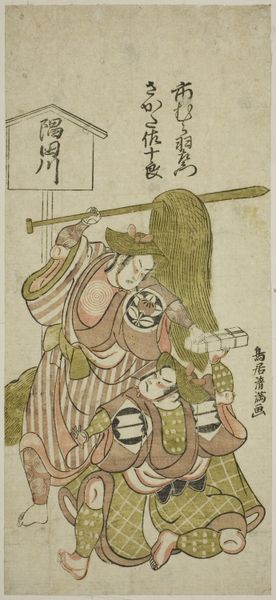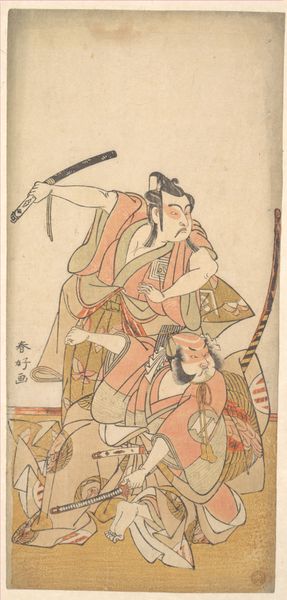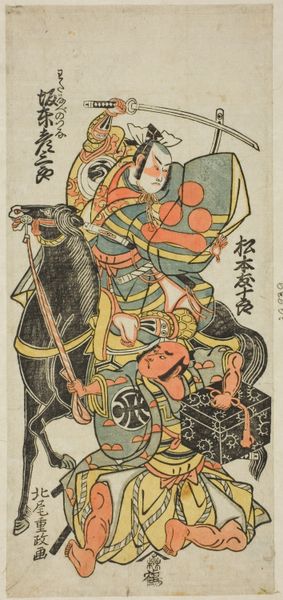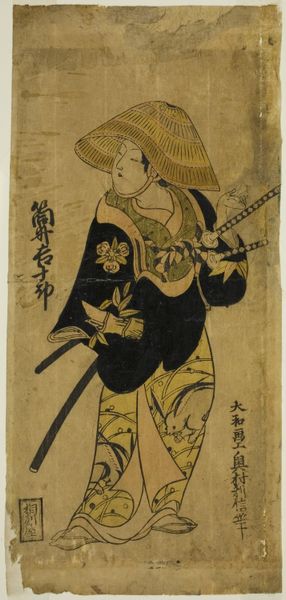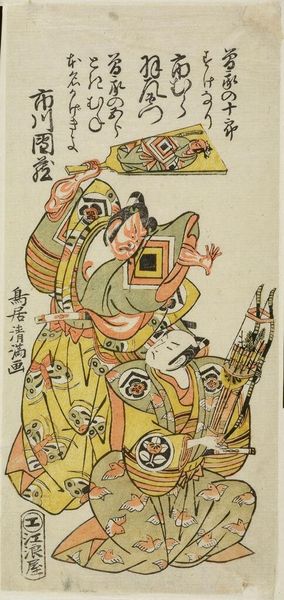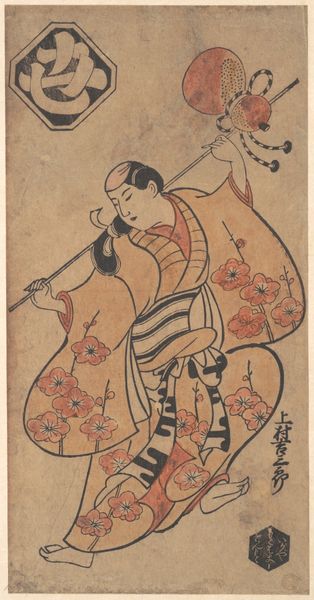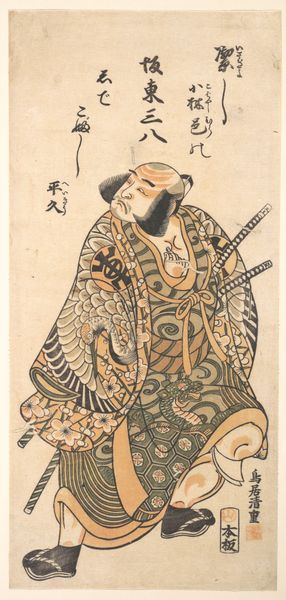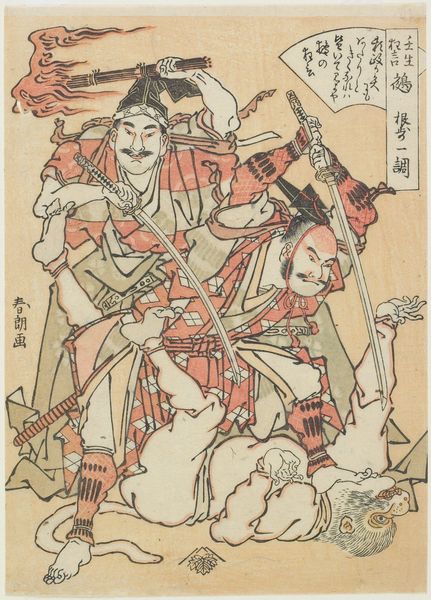
The Actor Otani Oniji II as Asahina Saburo in the play "Hatachiyama Horai Soga," performed at the Ichimura Theater in the first month, 1759 1759
0:00
0:00
print, woodblock-print
#
portrait
# print
#
asian-art
#
ukiyo-e
#
figuration
#
woodblock-print
Dimensions: 12 3/8 × 5 7/8 in.
Copyright: Public Domain
Curator: Here we have Torii Kiyosato’s woodblock print from 1759, titled "The Actor Otani Oniji II as Asahina Saburo in the play "Hatachiyama Horai Soga." Editor: Immediately, the graphic quality strikes me; it's almost poster-like in its boldness, from the stylized rendering of the figure to the raw, apparent woodgrain in the ground. It also creates a certain energy to see the production quality left "as is." Curator: Absolutely. "Ukiyo-e," the floating world, wasn't just a genre but a lens through which societal shifts and desires were mirrored, largely catering to merchant class tastes. Consider how theater itself, a space for enacting rebellion and exploring complex identities, was pivotal in cultural expression. Editor: And this particular print captures the labor-intensive method perfectly: the visible grain of the wood emphasizes the sheer physical act of production involved in reproducing this image for mass consumption, while still creating an element of high design for the wealthy patrons. Curator: Exactly! This is the actor Otani Oniji II playing the role of Asahina Saburo. How does the depiction of his character relate to contemporary audiences? Do the themes of gender expression in theater give agency to those on the outside of society? Editor: Those very deliberately placed lines and planes emphasize not only flatness but also a sense of texture – the materiality of the actor’s robe versus the smoothness of his painted face. One sees how patterns become both ornament and symbolic representation. Curator: Precisely, and in Ukiyo-e art, signifiers, especially within Kabuki theater representations, hold symbolic importance tied to gender roles. Otani Oniji II assumes a very controlled and calculated demeanor in Kiyosato's woodblock print, playing with performativity. How might contemporary queer performance resonate? Editor: Reflecting on this piece makes me reconsider the accepted canon in light of labor and accessibility of art throughout history, where printmaking techniques enabled production at all for a vastly increased audience, including, potentially, for underrepresented persons. Curator: Seeing the threads that bind identity, expression, and the creation of this piece together… it deepens my understanding of history. Editor: For me, the beauty is how labor merges art and commerce, shaping both society's aesthetic values, and art history's value systems as well.
Comments
No comments
Be the first to comment and join the conversation on the ultimate creative platform.
